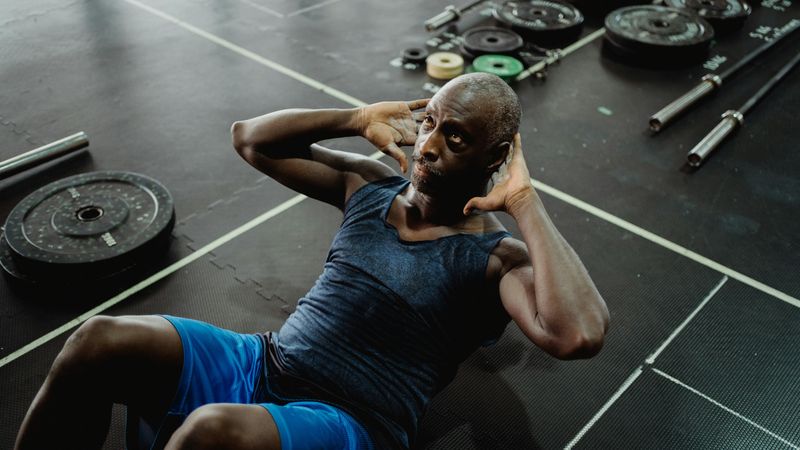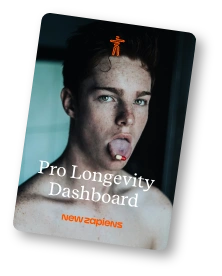DEXA scans: the gold standard for measuring bone density and body composition

Okay, let's dive deep into DEXA scans. These aren't just your average X-rays; they're a sophisticated tool that gives us a remarkable look at what's happening inside our bodies, specifically when it comes to bone health and body composition. It's like having a window into our internal landscape, revealing crucial information that can help us live healthier, longer lives.
So, what exactly is a DEXA scan? DEXA stands for Dual-Energy X-ray Absorptiometry. It's a non-invasive imaging technique, widely considered the gold standard for measuring bone mineral density (BMD). But it's not just about bones; DEXA scans also provide detailed information about body composition, including fat mass, lean muscle mass, and bone mineral content. Think of it as a two-for-one deal – a comprehensive assessment of both skeletal health and body makeup.
A brief history of bone density measurement
It's interesting to consider how we even got to DEXA scans. The journey to accurately measuring bone density has been a long one, actually. Osteoporosis, a condition characterized by weakened bones and increased fracture risk, was recognized as a health issue way back, but figuring out how to quantify bone loss? That was the challenge. Early attempts involved simple X-rays, which could show obvious bone thinning, but weren't very precise. Over time, researchers developed more sophisticated techniques, and finally, DEXA emerged as the clear winner. It's now the go-to method for diagnosing osteoporosis, monitoring treatment effectiveness, and even tracking changes in body composition.
How DEXA scans work: The science behind the image
The science behind DEXA scans is pretty clever. The machine uses two X-ray beams with different energy levels. These beams are directed at the body, and as they pass through different tissues (bone, fat, muscle), they are absorbed at different rates. This difference in absorption allows the DEXA scanner to calculate the density of the bone and the amount of fat and muscle tissue in the scanned area. It's kind of like the machine is "seeing" the different components of your body by how they interact with the X-rays.
The procedure itself is quick and painless. You simply lie on a cushioned table, and a scanner arm moves over your body, focusing on key areas like the spine, hip, and forearm – these are common sites for osteoporosis-related fractures. The whole process usually takes between 10 and 20 minutes, and the radiation exposure is minimal, much lower than a standard X-ray.
Deciphering the results: T-scores and Z-scores
Once the scan is complete, you'll receive a report with two key scores: the T-score and the Z-score. Both are important, but they tell slightly different stories
- T-score: This is the primary score used to diagnose osteopenia and osteoporosis. It compares your bone density to the average bone density of a healthy young adult (typically someone in their 20s or 30s). A T-score of -1.0 or higher is considered normal. A score between -1.0 and -2.5 indicates osteopenia, meaning you have lower than normal bone density and are at increased risk for osteoporosis. A T-score of -2.5 or lower signifies osteoporosis, a condition characterized by significantly weakened bones and a high risk of fractures.
- Z-score: This score compares your bone density to the average bone density of people your own age, sex, and ethnicity. It's particularly useful for younger individuals or when trying to identify underlying causes of bone loss. A low Z-score might suggest that something else is going on, like a hormonal imbalance or a nutritional deficiency.
Beyond bone density: the body composition advantage
One of the really cool things about DEXA scans is that they also provide a detailed breakdown of your body composition. This includes:
- Fat mass: The total amount of fat in your body.
- Lean mass: This includes muscle, bone, and other non-fat tissues.
- Bone mineral content (BMC): The amount of mineral in your bones.
This information can be incredibly valuable for a variety of reasons. For example, if you're trying to lose weight, a DEXA scan can tell you whether you're losing fat or muscle. This allows you to adjust your diet and exercise plan to ensure you're preserving muscle mass while losing fat. Similarly, athletes can use DEXA scans to track their muscle growth and optimize their training programs. And for individuals with certain medical conditions, like sarcopenia (age-related muscle loss), DEXA scans can help monitor muscle mass and guide treatment strategies.
The role of DEXA in personalized medicine
DEXA scans are playing an increasingly important role in personalized medicine. The detailed information they provide allows healthcare professionals to tailor treatment plans to individual needs. For example, someone with osteopenia might be advised to increase their calcium and vitamin D intake, engage in weight-bearing exercise, and perhaps consider medication to prevent further bone loss. And as we learn more about the link between body composition and health, DEXA scans will likely become even more valuable in preventing and managing a wide range of conditions.
Where to get a DEXA scan: finding a reputable facility
So, you're interested in getting a DEXA scan. Where do you go? Several types of facilities offer DEXA scans, including:
- Hospitals and medical centers: These are often the most convenient option, as they usually have the latest technology and a team of experienced professionals.
- Independent imaging centers: These centers specialize in imaging services and may offer more competitive pricing or more flexible scheduling.
- Community health centers: These centers provide healthcare services to underserved communities and may offer DEXA scans at reduced rates or on a sliding scale.
To find a facility near you, you can search online directories, ask your doctor for recommendations, or contact your insurance provider for a list of in-network providers.
The future of DEXA technology
The future of DEXA scans looks bright. Researchers are constantly working to improve the technology and expand its applications. One promising area is the integration of artificial intelligence (AI) and machine learning. These technologies can help analyze DEXA scan data more efficiently and accurately, potentially identifying subtle changes in bone density or body composition that might be missed by the human eye. We may also see DEXA scans being used to assess risk for other conditions, such as cardiovascular disease and diabetes.
Another exciting development is the potential for portable DEXA scanners. This would make DEXA scans more accessible to people in remote areas or those with mobility issues. Imagine being able to get a DEXA scan in your doctor's office or even at home!
DEXA scans: a valuable tool for health and wellness
In conclusion, DEXA scans are a valuable tool for assessing bone health and body composition. They provide crucial information that can help us prevent osteoporosis, manage weight, optimize athletic performance, and personalize healthcare. As the technology continues to advance, DEXA scans are poised to play an even greater role in promoting health and wellness for years to come. If you're concerned about your bone health or interested in learning more about your body composition, talk to your doctor about whether a DEXA scan might be right for you.
References
Author: Fabian Peters
Nature lover, health enthusiast, managing director and editorial director of the health portal Heilpraxinet.de




